conversation
with you!
You have our ear and we can’t wait to hear about your idea! Share your details here and we will make sure to schedule a coffee date with you soon.
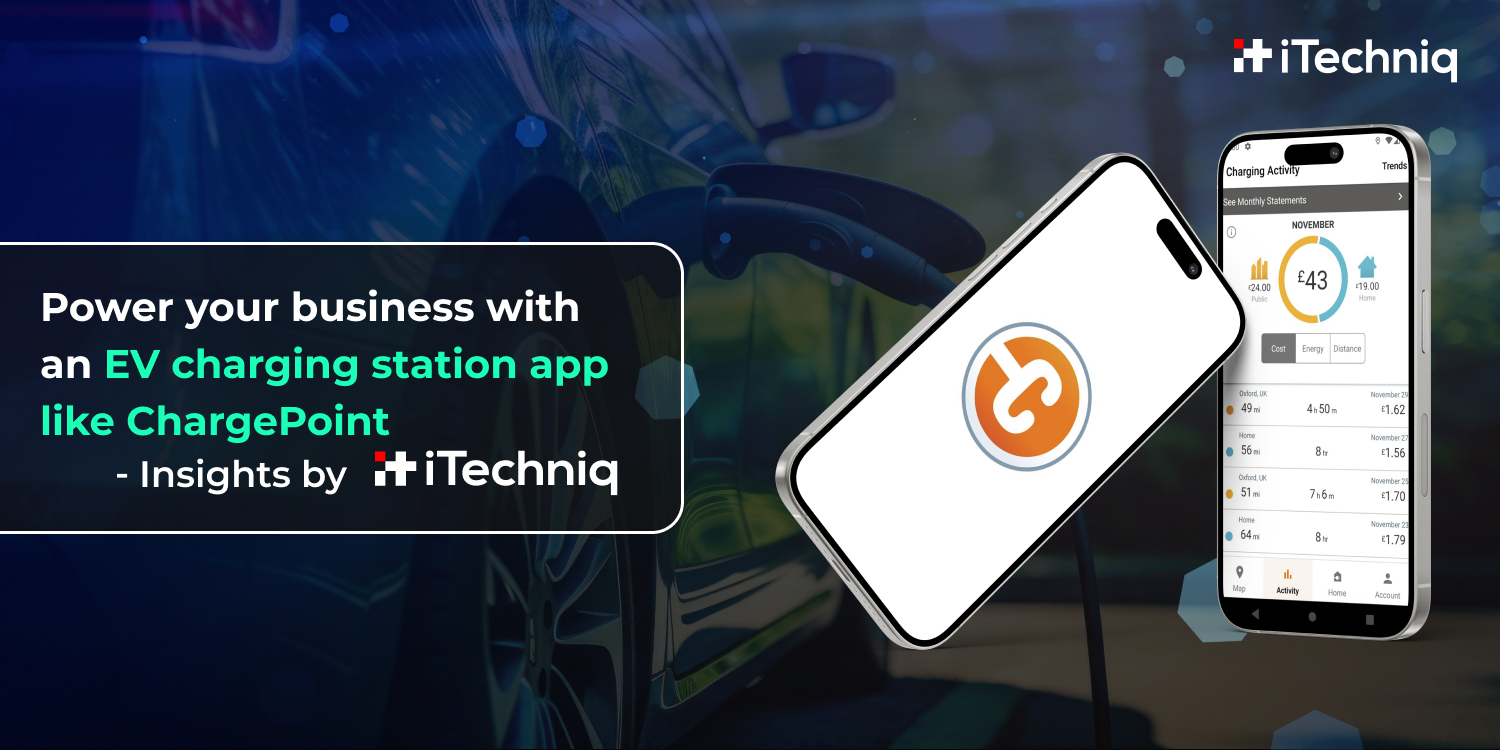
The EV revolution is gaining pace across the world, and with it, there is a skyrocketing demand for efficient and easy-to-use charging solutions. As more and more people switch to EVs, the demand for safe and convenient charging infrastructure increases manifold. This has resulted in an increased number of EV charging stations, thereby creating the need for strong EV charging station apps like ChargePoint.
ChargePoint has created an industry benchmark in providing a smooth experience for users of EVs to find, reserve, and pay for charging sessions. Creating an EV charging station app like ChargePoint requires understanding the EV ecosystem, user requirements, and adoption of cutting-edge technologies in depth.
In this blog, we will deep dive into the steps and factors that go into creating an EV charging app development company that meets the needs of today’s user and is competitive in a crowded market.
Prior to delving into app development, it’s important to understand the elements and players of the EV charging ecosystem:
Learning about these stakeholders aids in creating an app that suits the needs of everyone involved.
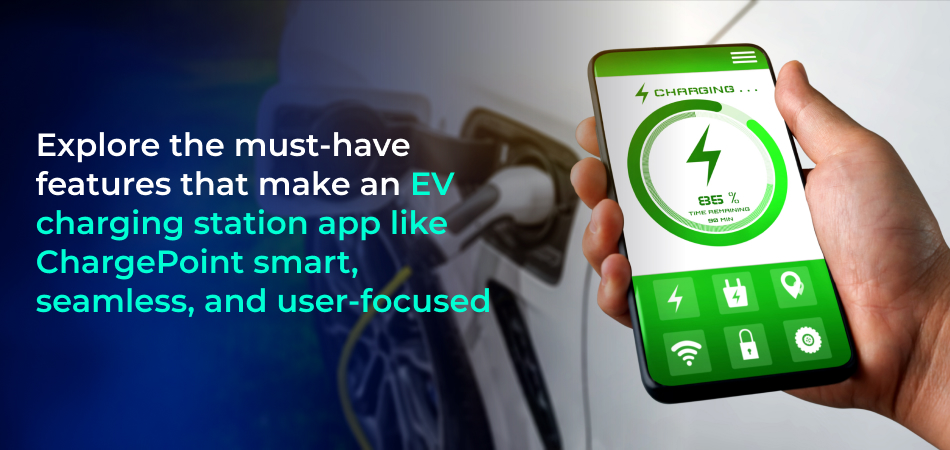
In order to replicate and even better the capabilities of ChargePoint, your app would need to include the following features:
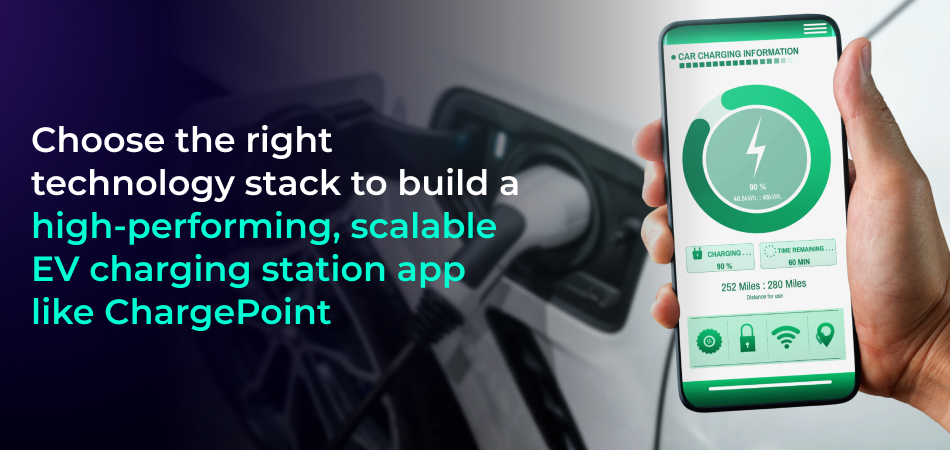
The correct technology stack is crucial to the app’s performance, scalability, and maintainability.
To deliver a superior user experience and remain competitive in the market, include the following technologies:
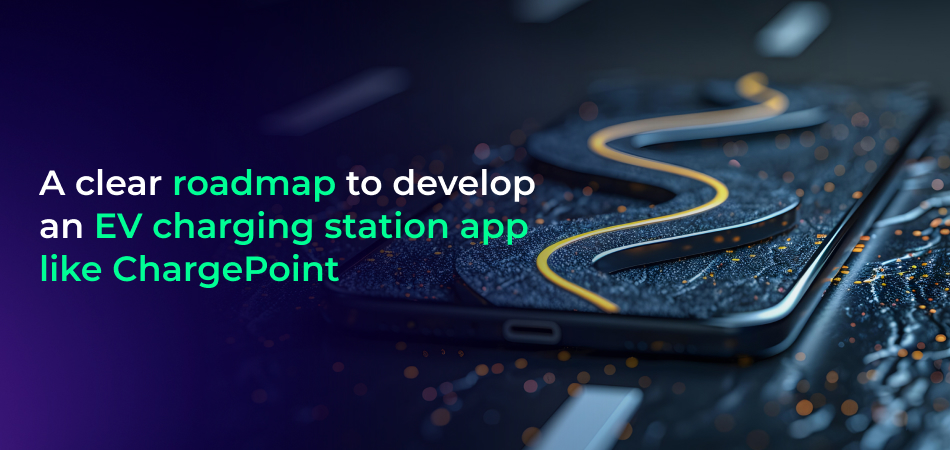
Cost to build an EV charging station app like ChargePoint depends on features, complexity, and the location of the development team. Here’s an approximate estimate:
Costs for the following may be additional:
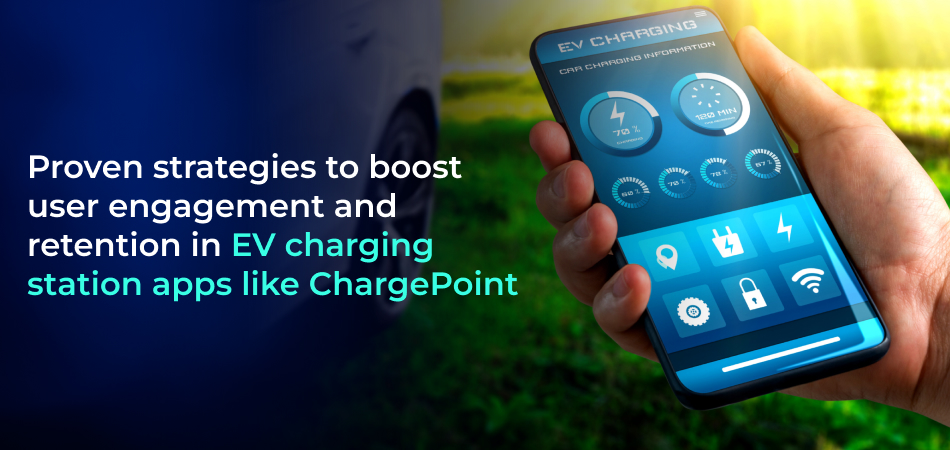
Creating an EV charging station app like ChargePoint is only the first step — sustaining user engagement is what propels long-term success. Here’s how to get your users back:
Provide customizable user profiles with the ability to track energy consumption, favorite EV charging stations, and personal settings like preferred connector type or payment mode.
Integrate gamification features such as eco-friendly driving badges or rewards for frequent charging. Offer loyalty programs with special perks or discounts at partnered EV charging facilities to retain high-value customers.
Establish an in-app community where customers can leave reviews, rate the charging stations, ask questions, and assist one another. This establishes trust and engagement, making your app stand out from the competition.
Provide live chat or AI-powered chatbots to support users with questions about locating charging spots, payment, or technical issues during a charging session.
By adding these engagement features, your EV charging station app not only replicates what ChargePoint has but provides a more interactive, user-focused experience.
After your EV charging app is functional and adding value, it’s time to monetize. Below are some tried and tested revenue models:
Charge customers a fixed amount or varying fee whenever they utilize a charging station. You can also charge a commission on charging station operators for every transaction on the app.
Provide premium plans that offer benefits like priority positions, access to high-speed charging, or reduced fees. Subscription plans can provide a consistent revenue stream.
Allow users to use basic functionality for free while exposing premium features like route planning, station analysis, or priority support to in-app purchases.
Partner with EV producers, green energy brands, and insurance companies to show sponsored content or sell special offers. Charging stations can also advertise local businesses (malls, restaurants) for a price.
Sell a white-label version of your EV charging station app to third-party charging station operators, allowing them to operate their network on your infrastructure and branding.
Such monetization strategies make sure that your EV charging station app such as ChargePoint remains profitable while offering high value to stakeholders and users.
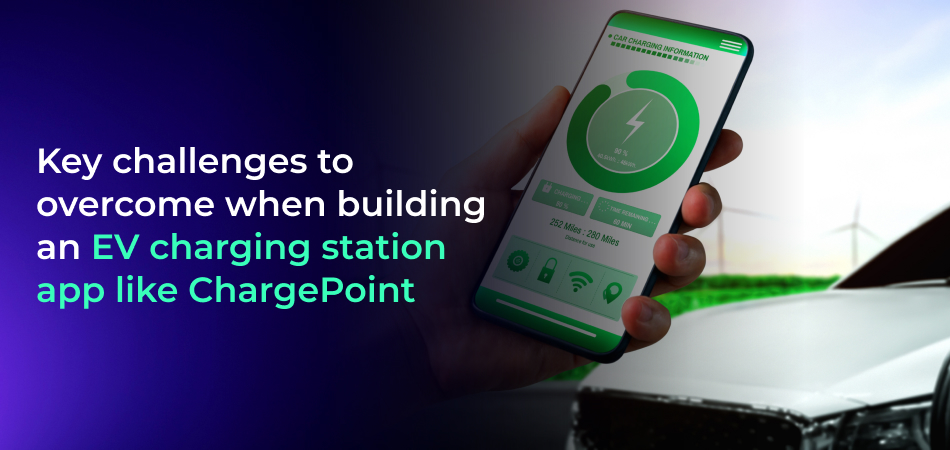
Developing a feature-packed, secure, and scalable EV charging app is easier said than done. The following are typical challenges developers encounter and how they can be addressed:
Having your app properly communicate with varied EV charging stations—each employing different hardware or protocols—is essential. OCPP (Open Charge Point Protocol) support guarantees interoperability and data exchange.
Your application should give precise real-time information regarding station availability, fare, and status. Insufficient synchronization will result in customer dissatisfaction. Resort to IoT integration and effective cloud syncing to counter that.
When your application becomes increasingly popular, it should scale for higher traffic and data. A strong backend setup with AWS, Google Cloud, or Azure guarantees smooth functioning under heavy loads.
Since users input financial data such as payment information and geographical data, it is crucial to implement end-to-end encryption, token-based authentication, and GDPR data policies.
EV charging is highly regulated. Your EV charging station app must be compliant with local legislation on data privacy, billing clarity, and energy consumption reporting.
By anticipating these challenges, your app will provide a secure, smooth, and user-friendly experience similar to ChargePoint or even superior.
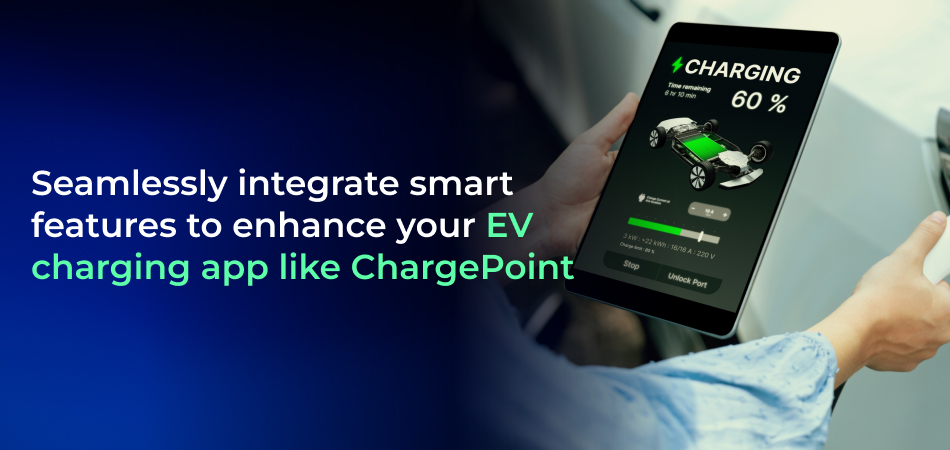
In order to remain competitive in the EV industry, your EV charging station app such as ChargePoint needs to adopt smart and intelligent features. This is what can provide your app with a competitive advantage:
Implement EV-specific routing that determines routes considering battery life, available charging points, traffic, and real-time availability of stations.
Let users return surplus energy from their EVs back to the grid during peak-demand times and earn credits or financial incentives — an increasingly popular feature among eco-friendly users.
Deploy algorithms to maximize energy delivery between charging points, averting grid congestion and providing a more comfortable charging experience during rush hours.
Offer customers reports on their carbon savings in terms of electric miles driven and energy consumed through your app, promoting sustainability.
Smart integrations such as these set your app apart from standard EV charging apps and bring you closer to the innovation horizon of apps such as ChargePoint.
If you wish to save money and time and yet provide superior performance, Flutter app development is your best option.
A 2024 Stack Overflow Developer Survey revealed that 46% of developers prefer Flutter for building apps due to its efficiency, flexibility, and cost-effectiveness.
Employing Flutter app development guarantees a smooth, feature-loaded EV charging station app like ChargePoint as an example that runs smoothly on multiple platforms.
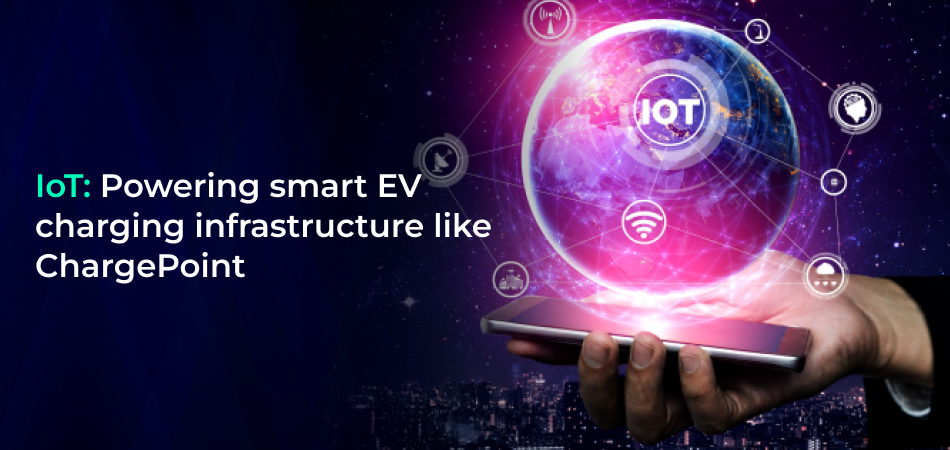
You can’t develop an EV charging station app like ChargePoint without incorporating Internet of Things (IoT). IoT is what ensures a real-time connection between the mobile app and the EV charging stations.
IoT integration in EV and energy management systems could create up to $400 billion in value by 2030 across industries.
Investment in IoT app development not only increases the user trust but also maximizes the operations of your EV charging app.
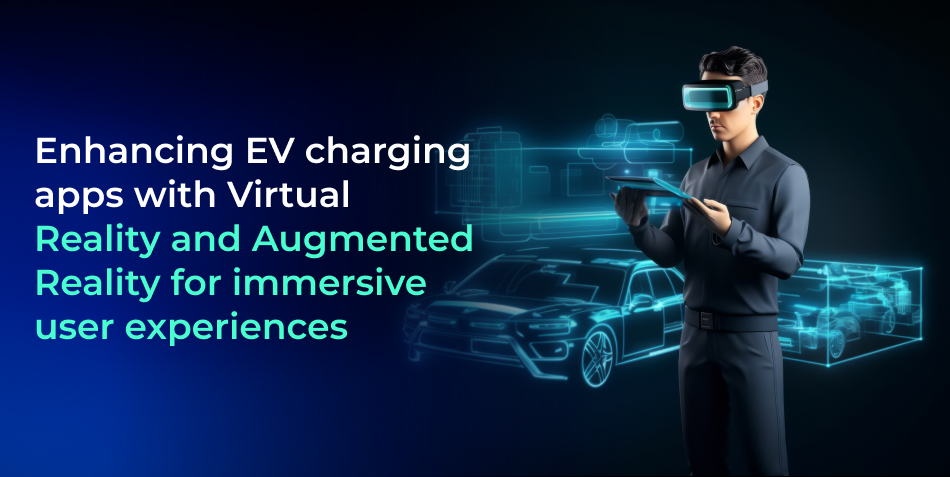
While it might sound out of a sci-fi movie, Virtual Reality app creation and Augmented Reality app development are making inroads in EV charging station apps like ChargePoint.
Although not all EV charging apps employ VR/AR yet, using virtual reality app development and augmented reality app development today can future-proof your platform and differentiate you.
One of the essential success factors of an EV charging station app like ChargePoint is its payment system. Through robust fintech app development, you guarantee transactions are fast, secure, and varied.
Fintech app development utilizing cutting-edge technology means your EV charging app provides a seamless user experience in payments to increase user satisfaction and retention.
The EV market is changing fast, and so will your app. Some future directions to observe are below:
With improvements in battery technology, there are increasingly more ultra-fast charging stations popping up. Your app needs to support these stations with filtering and pricing data.
Blockchain technology can provide transparent and tamper-proof billing of energy consumed, allowing for trust between users and charging station operators.
With voice assistants gaining traction, the user might find it convenient to look for charging points, book a spot, or inspect their status through voice commands.
Applications that are integrated with local smart grids can alter prices in real time, alert users of best times to charge, or prevent power outages by managing load distribution.
Most users are now renting EVs or availing themselves of ride-share EVs. Your EV charging app can offer fleet management solutions for EV-as-a-service enterprises.
Keeping ahead of these trends will make your EV charging station app like ChargePoint future-proof and attractive to a tech-savvy clientele.
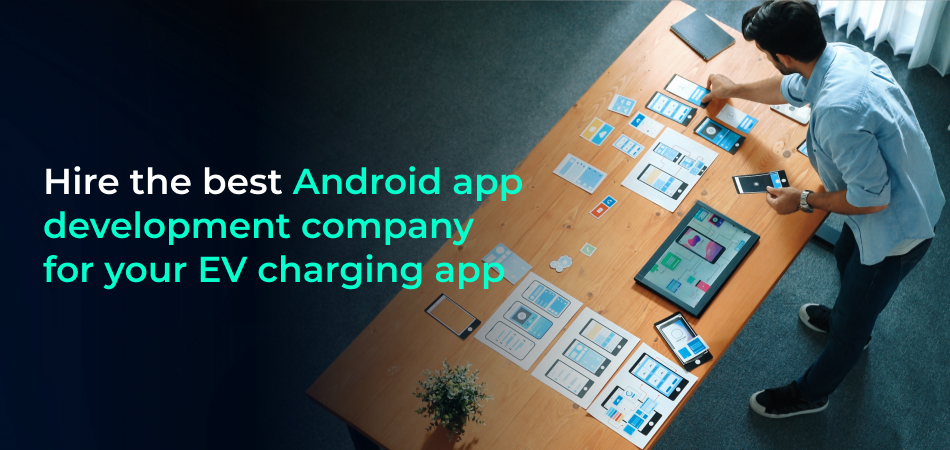
With an understanding of the features and tech stack required, it’s now time to hire Android app professionals who will turn your idea into reality.
If you are searching for a dependable partner, iTechniq is a well-established app development firm with experience in IoT, AR/VR, and fintech app development space. We have facilitated both startups and businesses to deploy scalable, user-focused apps that thrive in the modern-day digital market.
Creating an EV charging station app like ChargePoint is not a matter of mere code writing. It requires in-depth knowledge of EV charging stations, smooth UX, solid backend infrastructure, fintech integrations, and forward-looking technologies such as AR/VR and IoT.
Whether you’re creating your first EV charging app or expanding your current platform, the right app development company can make a world of difference.
We at iTechniq excel at:
And assisting companies with hiring Android app specialists specific to their business needs.
Get in touch with us today to electrify your idea and take your business to the next level.